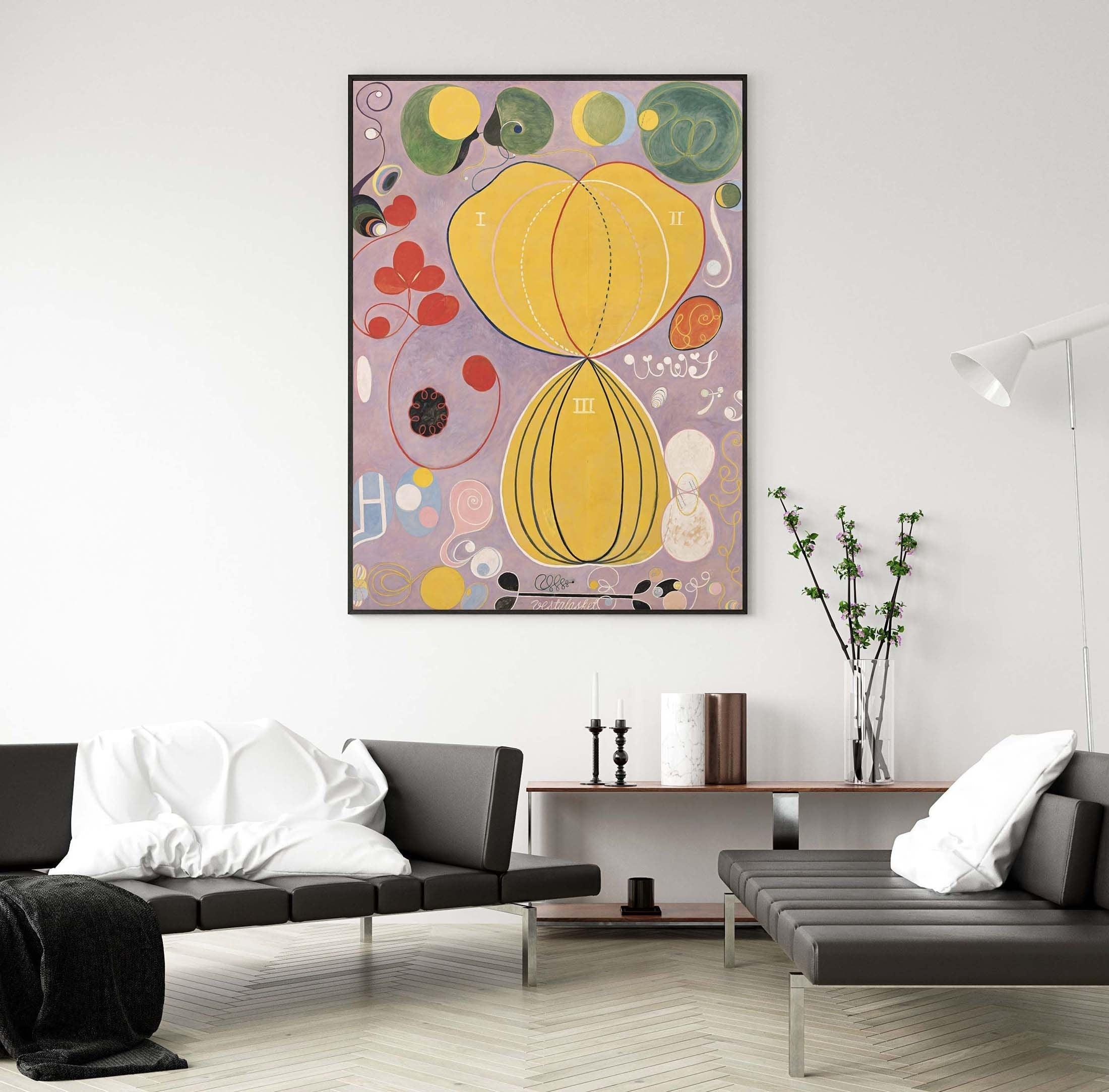Description
Painting No. 7, Hilma af Klint's Adulthood is one of the most outstanding works by the Swedish artist, who is considered a pioneer of abstract art. This particular work is part of a series of paintings called "The Ten Greatest", which were created by af Klint in 1907 while he was participating in a spiritual group known as "The Five".
Although not as well known as many of the male artists of her time, Swedish artist Hilma af Klint was a pioneering abstract artist whose radical paintings predate many of her male contemporaries. She requested that her great work, most of which was never exhibited during his lifetime, be hidden until 20 years after his death.
The collection represents the stages of life, including childhood, youth, maturity and old age. They combine botanical elements and recognizable organic objects that refer to birth and growth. This huge canvas, 3 meters high and 2 meters wide, was painted on paper, on the studio floor, and then pasted onto a canvas.
Af Klint interprets adulthood in full bloom by painting various free-flowing shapes in different sizes and colors on a lilac background. The central yellow symbol resembles a flower, while the spirals and biomorphic shapes are symbols of growth and fertility.
What is interesting about this particular painting is that it was created long before other works considered to be the first of abstract art, such as the paintings of Wassily Kandinsky or Kazimir Malevich. In fact, af Klint's paintings remained largely unknown during his lifetime and were only discovered after his death in 1944.
Another interesting fact about the work of Hilma af Klint is that the artist created this series of paintings during a period of intense spiritual activity and exploration in her life. The painting stands out for its complexity and symbolism, with a large number of geometric shapes and hidden symbols that reflect the artist's belief in spirituality and communication with the spiritual world. She believed in direct communication with spiritual beings and in the ability of art to represent the invisible worlds. In fact, af Klint wrote in her diary that she had been chosen by a spiritual entity to create this series of paintings, which contained messages and teachings for humanity.
In conclusion, No. 7, Adulthood is considered by some critics to be an early example of the use of abstraction in art as a means of expressing spiritual and mystical ideas. Unlike other abstract artists of the time, such as Kandinsky, af Klint did not draw inspiration from nature or visible reality to create his works, but instead sought to represent the essence of invisible worlds through symbolic shapes and colors.



